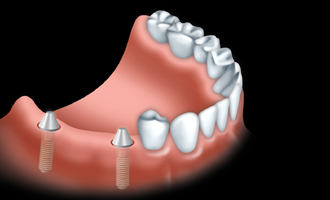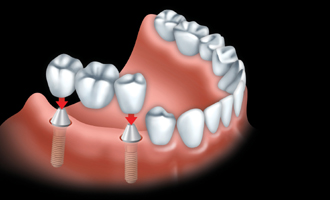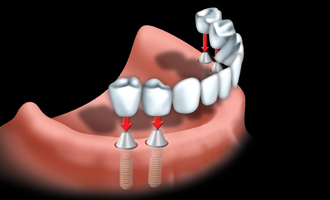What Is A Dental Bridge
A bridge, also called a “fixed bridge” or a “fixed dental prosthesis,” is a dental restoration that replaces one or more missing teeth. It extends across an area that has no teeth and is typically made up of an artificial tooth fused between 2 crowns. (A crown is a hollow, artificial tooth that fits over a natural tooth or a dental implant). The bridge is held firmly in place by your own teeth on each side of the missing one(s) or by dental implants. A bridge is permanent and cannot be removed.
Dental Bridge Procedure
- If you have healthy teeth on each side of a missing tooth (or teeth), your dentist files down the 2 healthy teeth to prepare them for the bridge. If you don’t have healthy teeth or enough teeth to support a bridge, then dental implants may be surgically placed. A dental implant is an artificial root made of titanium metal that is inserted into the jawbone to replace the root of the natural tooth. The implant acts as an anchor to hold an artificial tooth or bridge in place.
- Next, your dentist makes a model of your teeth by taking impressions (molds). The model is used to custom-make the artificial tooth (or teeth) and 2 crowns as one piece. This piece is called a bridge.
- Meanwhile your dentist places a temporary bridge in your mouth to protect the exposed teeth and gums.
- During your second visit, your dentist removes the temporary bridge and places the custom made bridge in your mouth. The crowns are either cemented to your 2 healthy teeth or attached to your dental implants on each side of the missing tooth (or teeth).
Types Of Dental Bridges
There are different types of dental bridges. Your dentist or prosthodontist will recommend the most appropriate one depending on the location of the missing tooth (or teeth) and the condition of your teeth, mouth and gums.
Traditional bridges are used if there are natural teeth on each side of the gap where the tooth is missing. (As an alternative to a bridge, your dentist may suggest a single implant to replace a missing tooth between 2 healthy teeth. An implant will prevent you from having to get your healthy teeth filed down in preparation for the crowns.)

With a traditional bridge, healthy teeth on each side of the missing tooth are prepared for crowns.

The custom-made artificial tooth is fused to 2 crowns. This is called a bridge.

A bridge is permanent and cannot be removed.
Implant bridges are used if you don’t have healthy teeth or enough teeth to support a bridge, or when several or all teeth are missing. A custom-made bridge is anchored to the dental implants. Your dentist will first determine if dental implants are right for you.

With an implant bridge, dental implants are surgically placed into the jawbone.

A custom-made bridge is anchored to the dental implants.

Implant bridges can be used when all your teeth are missing.
Resin-bonded bridges, also known as “Maryland” bridges, are used when the missing teeth are in the front of the mouth. This type of bridge involves the artificial teeth being fused together to metal bands and cemented to the back of your natural teeth.
Cantilever bridges are used when there are healthy teeth on only one side of the missing tooth or teeth. This procedure involves anchoring the artificial tooth over one or more of your natural adjacent teeth.
Caring For Your Bridge
If you take good care of your bridge, it should generally last for about 10 years, or perhaps longer. Like natural teeth, bridges need to be brushed and flossed every day. Your dentist will show you how to use a floss threader to floss under and around the artificial tooth (or teeth) in the middle of the bridge. Regular dental visits and professional cleanings are also important. If you have an implant bridge, your dentist will show you how to properly care for them.
For more information: https://www.cda-adc.ca
Canadian Dental Association





